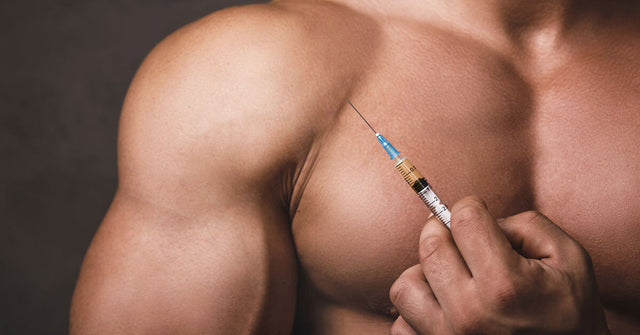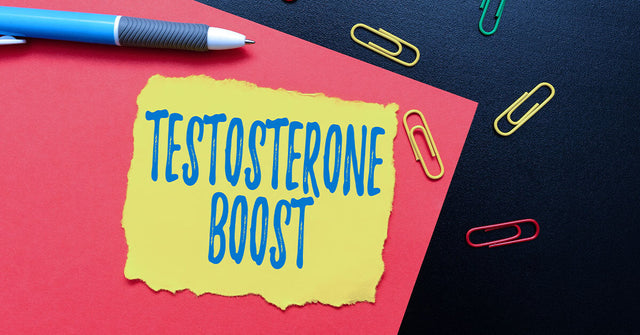Sexual response is a fundamental aspect of human experience, influencing not only personal relationships but also overall well-being. Despite its universal nature, many individuals remain unaware of the intricate processes that occur during sexual activity. Understanding the four stages of sexual response can enhance intimacy, improve communication between partners, and promote a healthier sexual life. This article delves into the physiology and psychology behind each stage, debunking common myths and providing practical insights for a more fulfilling sexual experience.
Introduction
Sexuality is a complex interplay of biological, emotional, and social factors. Whether in committed relationships or casual encounters, the way individuals experience and respond to sexual stimuli can vary widely. The concept of the four-stage sexual response cycle—excitement, plateau, orgasm, and resolution—offers a framework to comprehend these variations. Originally proposed by William Masters and Virginia Johnson in the 1960s, this model has since been expanded upon by researchers and clinicians to better reflect the nuances of human sexuality.
In a society increasingly open to discussing sexual health, understanding these stages is more relevant than ever. It not only fosters personal awareness but also empowers individuals to communicate their needs and desires effectively. This article explores each stage in detail, examining the physiological changes, psychological aspects, and common misconceptions associated with them. By shedding light on the true nature of sexual response, we aim to enhance your knowledge and improve your sexual well-being.
The Four Stages of Sexual Response
1. Excitement
The excitement phase marks the beginning of the sexual response cycle. This stage is characterized by increased heart rate, muscle tension, and the onset of sexual arousal. In women, physiological changes include lubrication of the vagina, swelling of the genitalia, and heightened sensitivity of erogenous zones. Men typically experience erections, increased testosterone levels, and heightened sensitivity of the penis.
Physiological Changes
During excitement, the body prepares for sexual activity. Blood flow increases to the genital areas, leading to the physical signs of arousal. These changes are mediated by the autonomic nervous system, specifically the sympathetic and parasympathetic branches, which regulate involuntary bodily functions.
Psychological Aspects
Emotional and mental states play a significant role in the excitement phase of the sexual response. Feelings of attraction, desire, and anticipation contribute to the overall arousal. Stress, anxiety, or distractions can impede the onset of excitement, highlighting the importance of a conducive environment for sexual activity.
Common Misconceptions
A prevalent myth is that a certain level of physical attractiveness is necessary for arousal. In reality, emotional connection and contextual factors often play a more substantial role in triggering excitement. Additionally, the belief that arousal should occur instantly overlooks individual differences in response times and stimuli preferences.
2. Plateau
Following the initial excitement, the plateau stage represents a sustained level of sexual arousal. This phase serves as a bridge between early arousal and the peak of orgasm, and its duration can vary based on numerous factors, including individual physiology and external stimuli.
Physiological Changes
The body's preparedness intensifies during the plateau phase. Additional lubrication in women and increased blood flow in men continue, amplifying sensitivity and responsiveness. Muscle tension escalates, and breathing becomes more rapid, signaling that the body is nearing the point of no return.
Psychological Aspects
The plateau stage involves heightened anticipation and focus on the sexual experience. Individuals may experience an increase in psychological arousal, characterized by vivid fantasies and deepened emotional connections with their partner. This mental state can enhance the overall sexual response, making it more fulfilling and intimate.
Common Misconceptions
Many believe that the plateau phase is merely an extended excitement phase, but it is distinct in its own right. Some also assume that reaching the plateau is mandatory for a satisfying sexual experience. However, experiences vary, and some individuals may find fulfillment without prolonged plateau phases.
3. Orgasm
Orgasm is often considered the pinnacle of the sexual response cycle. It is a short-lived, intense period of pleasure accompanied by involuntary physical reactions, such as rhythmic contractions of the pelvic muscles and a surge of endorphins.
Physiological Changes
During orgasm, the body experiences rapid and powerful contractions in the genital area. For men, this typically includes ejaculation, while women may experience contractions of the uterine and vaginal muscles. Heart rate and blood pressure peak, and there is a brief interruption in breathing.
Psychological Aspects
Orgasm is closely tied to feelings of release and satisfaction. It often results in a strong sense of well-being and can contribute to emotional bonding between partners. The psychological impact of orgasm extends beyond the immediate sensation, influencing overall mood and stress levels.
Common Misconceptions
There is a common misconception that orgasms are essential for sexual satisfaction. While orgasm can enhance sexual experiences, many individuals find pleasure and fulfillment through other aspects of intimacy. Additionally, myths surrounding the 'perfect orgasm' can create unrealistic expectations and pressure, detracting from genuine pleasure.
4. Resolution
The final stage, resolution, involves the body returning to its baseline state post-orgasm. This phase differs between men and women, particularly regarding the refractory period—the recovery time before another sexual response cycle can begin.
Physiological Changes
Following orgasm, the body gradually decreases heart rate, blood pressure, and muscle tension. Men typically enter a refractory period where further sexual stimulation does not result in another erection or orgasm. Women may experience a varying range of experiences, with some able to engage in multiple cycles of arousal and orgasm.
Psychological Aspects
The resolution phase often brings a sense of relaxation and contentment. Emotional closeness and satisfaction are commonly reported, reinforcing the bond between partners. It is also a time for reflection and can foster deeper emotional connections.
Common Misconceptions
A widespread belief is that men must experience refractory periods to achieve satisfaction, whereas women can frequently experience multiple orgasms. This oversimplification ignores individual differences and the complexity of sexual response. Additionally, some assume that resolution marks the end of sexual desire, which is not necessarily the case.
The Science Behind Sexual Response
Understanding the four stages of sexual response requires a look into the scientific underpinnings that govern these processes. Research in human sexuality combines elements of biology, psychology, and sociology to provide a comprehensive view of sexual behavior.
Biological Mechanisms
The autonomic nervous system plays a crucial role in regulating the physiological changes during sexual response. Neurotransmitters like dopamine and norepinephrine facilitate arousal and pleasure, while hormones such as testosterone and estrogen influence libido.
Studies have shown that the brain areas involved in reward and pleasure—such as the limbic system—are highly active during sexual activity. These neural activations not only drive the physical responses but also reinforce the emotional connections between partners.
Psychological Factors
Mental health and emotional well-being are integral to the sexual response cycle. Conditions like anxiety, depression, and past traumas can significantly impact an individual's ability to engage in and enjoy sexual activity. Cognitive processes, including perception and attention, also influence how sexual stimuli are interpreted and responded to.
Moreover, societal and cultural attitudes toward sex shape individual experiences. Expectations, norms, and taboos can either enhance or hinder sexual expression and satisfaction.
Sociocultural Influences
Sexuality does not exist in a vacuum; it is deeply influenced by cultural contexts and social interactions. Media portrayals, religious beliefs, and interpersonal relationships all contribute to shaping how individuals perceive and engage in sexual activities.
For instance, cultural norms regarding body image and sexual behavior can affect self-esteem and willingness to explore one's sexuality. Understanding these sociocultural factors is essential for addressing sexual health comprehensively.
Health Claims vs. Reality
In the realm of sexual health, various products and therapies claim to enhance sexual performance or satisfaction. It's important to distinguish between scientifically supported benefits and marketing-driven exaggerations.
Popular Health Products
Supplements, lubricants, and devices advertised to boost sexual health often tout benefits like increased libido, longer-lasting performance, or heightened pleasure. While some products have evidence supporting their efficacy, others rely more on anecdotal claims.
For example, certain herbal supplements like ginseng and maca have been studied for their potential to enhance libido, with mixed results. Similarly, water-based lubricants can improve comfort during intercourse, but claims of significantly boosting arousal lack robust scientific backing.
Misleading Claims
Many products make unfounded promises, exploiting individuals' desires for improved sexual experiences. These claims can lead to unrealistic expectations and potential disappointment. In some cases, they may also pose health risks, such as interactions with medications or adverse reactions to unregulated ingredients.
Consumers should approach such claims critically, seeking information from credible sources and consulting healthcare professionals before trying new products.
Scientific Insights
Research supports the notion that a healthy lifestyle—balanced diet, regular exercise, adequate sleep, and stress management—plays a significant role in sexual health. Psychological therapies, such as cognitive-behavioral therapy, can also address issues like performance anxiety and relationship conflicts that impact sexual response.
Moreover, open communication between partners about desires and boundaries has been shown to enhance sexual satisfaction and intimacy, underscoring the importance of interpersonal dynamics over external aids.
Potential Downsides and Limitations
While understanding the sexual response cycle offers numerous benefits, there are also limitations and potential challenges to consider.
Biological Variability
Human sexual response is highly individualized. Factors like age, hormonal levels, and overall health can influence how each stage manifests. The four-stage model, while useful, may not accurately represent everyone's experience, leading to feelings of inadequacy or confusion for some individuals.
Psychological Barriers
Emotional issues such as stress, anxiety, and past traumas can disrupt the natural flow of the sexual response cycle. These barriers can impede arousal, prolong the resolution phase, or affect the ability to achieve orgasm, necessitating a holistic approach to sexual health that addresses mental well-being.
Sociocultural Constraints
Cultural norms and societal expectations can impose limitations on sexual expression. Issues like stigma around certain sexual practices or pressures to conform to idealized notions of sexuality can hinder individuals from fully experiencing or expressing their sexual desires.
Relationship Dynamics
The dynamics between partners play a crucial role in the sexual response cycle. Mismatched libido levels, communication issues, or unresolved conflicts can disrupt the natural progression through the stages, affecting overall sexual satisfaction and relationship health.
Practical Tips for Enhancing Sexual Response
Navigating the complexities of sexual response requires both self-awareness and effective communication. Here are some practical tips to enhance your sexual experiences:
Self-Awareness
Understanding your own body and what stimulates your arousal is fundamental. Take time to explore your preferences, fantasies, and boundaries. This self-knowledge can guide you in communicating your needs to your partner and seeking activities that are mutually satisfying.
Open Communication
Discussing desires, preferences, and concerns with your partner fosters a supportive and intimate environment. Honest conversations about what feels good, what doesn’t, and any insecurities can alleviate tension and enhance mutual understanding.
Create a Conducive Environment
A relaxed and comfortable setting can significantly impact the excitement and plateau stages of sexual response. Reducing distractions, ensuring privacy, and setting the mood with appropriate lighting or music can enhance the overall experience.
Practice Mindfulness
Being present in the moment can heighten your awareness of the physical and emotional sensations during each stage of sexual response. Mindfulness practices, such as deep breathing and focused attention, can increase intimacy and pleasure.
Address Health Issues
Chronic health conditions or medications can affect sexual response. Consulting healthcare professionals to manage these issues can improve sexual health. Addressing mental health concerns through therapy or counseling can also enhance sexual well-being.
Experiment and Explore
Trying new activities, positions, or forms of intimacy can keep the sexual relationship dynamic and exciting. Exploring different avenues of pleasure can lead to a deeper understanding of each other’s needs and enhance overall satisfaction.
Conclusion
Understanding the four stages of sexual response—excitement, plateau, orgasm, and resolution—provides valuable insights into the complex nature of human sexuality. By recognizing the physiological and psychological changes that occur during each phase, individuals and couples can enhance their sexual experiences, improve communication, and foster deeper emotional connections.
While the four-stage model serves as a useful framework, it is essential to acknowledge the variability and individuality of sexual response. Factors such as personal health, emotional well-being, and sociocultural influences play significant roles in how each person experiences sexuality. Embracing this diversity and approaching sexual health with openness and curiosity can lead to more fulfilling and satisfying intimate lives.
In an era where sexual health is gaining deserved attention, knowledge remains a powerful tool. By educating ourselves about the intricacies of sexual response, we can navigate the complexities of intimacy with confidence and understanding, ultimately leading to richer and more meaningful connections with ourselves and our partners.
More stories

The Truth About Test Boosters – You Might Be Surprised





